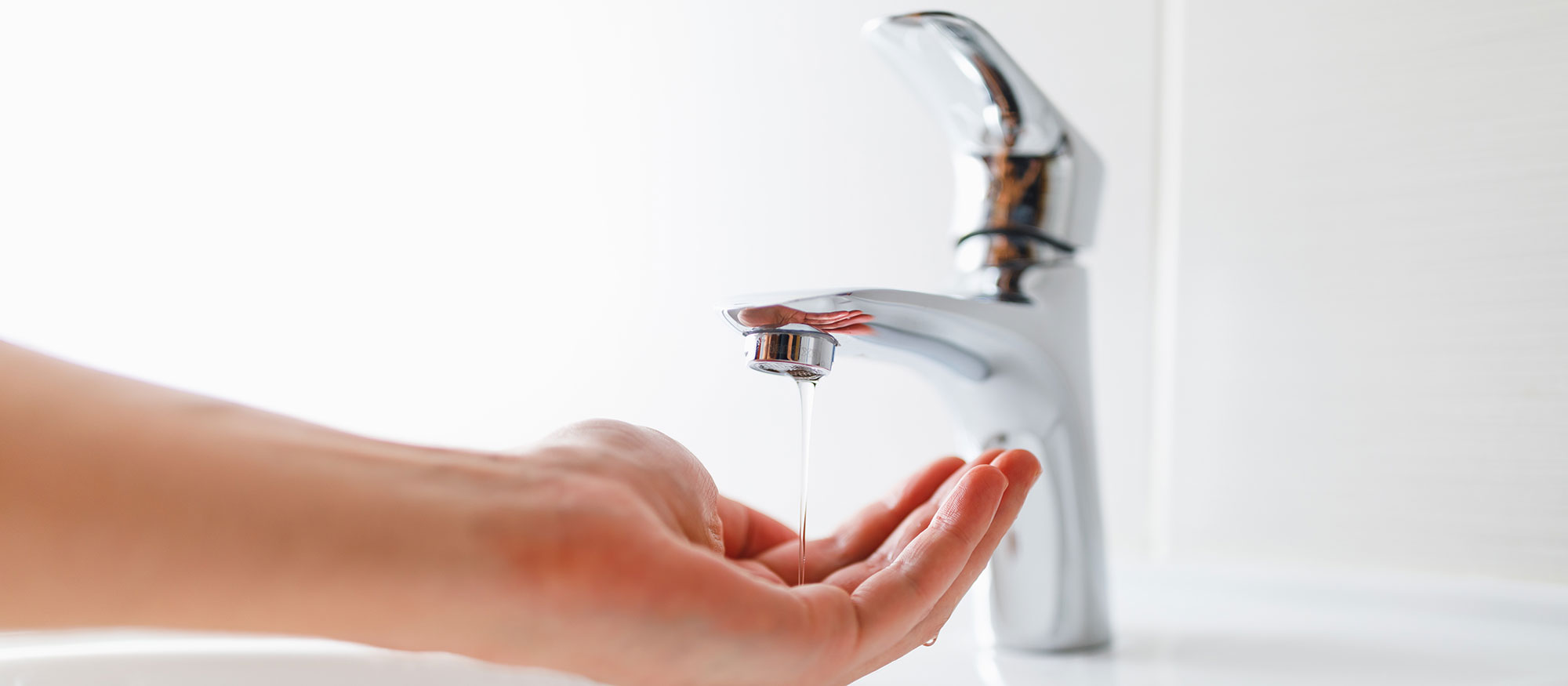Water pressure within the Las Vegas Valley Water District water distribution system varies, depending on the elevation of your property in relation to the elevation of the reservoir that provides water service for your area.
Peak water use and routine water system operations also can cause water pressure in the distribution system to fluctuate. Generally speaking, operating water pressure within our system can range from about 30 pounds per square inch (psi) to 100 psi.
Want to know what your water pressure is? Most home improvement stores sell inexpensive water pressure gauges that can be simply attached to your outside faucet or hose bib.
The Water District cannot adjust the water pressure for specific properties; however, if you have concerns with high pressure or low pressure, there are some steps you can take that may help resolve the issue.
Need help?
Many of the recommendations listed on this page will require the assistance of a licensed plumber.
Consider hiring a Water Smart Plumber to do the job.
Low water pressure
If you're experiencing a decrease in water pressure at your property, the issue is typically within your plumbing system. The list below may help you identify the cause of the low pressure.
- Water softeners: Depending on the type of water softener and plumbing configuration at your property, you may be able to troubleshoot low-pressure issues caused by your water softener. One option is to temporarily put the softener on by-pass and see if pressure increases. If it does, the low pressure is probably caused by the water softener and it may need to be serviced or possibly replaced.
- Pressure reducing valve: If the low pressure is at every faucet in the home and you have a pressure reducing valve (PRV) installed on your home plumbing system, you may want to verify that your PRV is set appropriately. Most PRVs are bell-shaped devices that may be installed near the water heater, water softener or outside on the inlet water line between your home and water meter. PRVs should be adjusted by a licensed plumber.
- Clogged aerators: If the low pressure is not affecting every faucet, the problem may just be a clogged or blocked faucet aerator. Check the aerator screens for rust, debris, scale or other particles that may be restricting flow. Simply clean or replace the aerator altogether.
- Hot water, low pressure: If the low pressure is only affecting the hot water at your property, there could be a problem with your water heater. Check the shut-off valve near the water heater and make sure it is fully open. You may need to consult a licensed plumber to evaluate the condition of your water heater and determine if it is affecting your water pressure.
- On-site water valve: Most homes in Southern Nevada have an on-site water valve located near other on-site fixtures, like a water heater or water softener. The valve may also be located in the garage or on the inlet line between your home and water meter. This valve, which may be utilized to make plumbing repairs, allows you to shut off the flow of water to the home. Make certain that this valve is open completely; even the slightest closure can restrict flows and decrease the water pressure.
- On-site leak: Low pressure also can be caused by a water leak somewhere on the property. Get tips on how to find a leak on your property.
High water pressure
Sustained pressure that exceeds 80 psi can damage on-site plumbing systems and may affect your water fixtures. If the water pressure at your property is 80 psi or greater, a pressure reducing valve (PRV) will help decrease the water pressure.
Pressure reducing valve
If your home water system does not have a pressure reducing valve (PRV), you can purchase them from a licensed plumber, who also can install it. If a PRV already exists, it may just need an adjustment to decrease the pressure at the property.
The Water District recommends that you consult a licensed plumber for adjustments and service to your PRV.
PRVs will not increase water pressure to a property; however, they do serve as a critical component to decrease water pressure to your level of preference. Most plumbing professionals recommend a PRV setting between 35 and 60 psi.
PRVs should be installed on the customer’s side of the water meter and are usually located near the water heater, water softener or on the inlet water line between your home and the water meter.
In accordance with Uniform Plumbing Codes, property owners and/or customers are responsible for installing and maintaining their own individual PRV devices whenever static water pressure exceeds 80 psi.
